Nijo Castle is a flatland castle located in Kyoto.
The castle consists of two concentric rings of fortifications,
the Ninomaru Palace, the ruins of the Honmaru Palace, various
support buildings and several gardens. The surface area of the
castle is 275,000 square meters, of which 8000 square meters is
occupied by buildings. In 1601, Tokugawa Ieyasu, the founder of
the Tokugawa Shogunate, ordered all the feudal lords in Western
Japan to contribute to the construction of Nijo Castle, which was
completed during the reign of Tokugawa Iemitsu in 1626. Parts of
Fushimi Castle, such as the main tower and the karamon, were
moved here in 1625-26. It was built as the Kyoto residence of the
Tokugawa Shoguns. The Tokugawa Shogunate used Edo as the capital
city, but Kyoto continued to be the home of the Imperial Court.
Kyoto Imperial Palace is located north-east of Nijo Castle. The
central keep, or donjon, was struck by lightning and burned to
the ground in 1750. In 1788, the Inner Palace was destroyed by a
city-wide fire. The site remained empty until it was replaced by
a prince's residence transferred from the Kyoto Imperial Palace
in 1893. In 1867, the Ninomaru Palace was the stage for the
declaration by Tokugawa Yoshinobu, returning the authority to the
Imperial Court. Next year the Imperial Cabinet was installed in
the castle. The palace became imperial property and was declared
a detached palace. During this time, the Tokugawa hollyhock crest
was removed wherever possible and replaced with the imperial
chrysanthemum.In 1939, the palace was donated to the city of
Kyoto and opened to the public the following year. We were not
allowed to take pictures inside. But we noticed the areas where
the floor were squeeking when we stepped on it - so no enemy
could enter.
Click on the
picture to get a larger version
| Nice overview |
 |
| View
after you have entered the high doors |
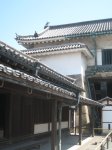 |
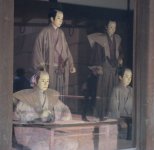 |
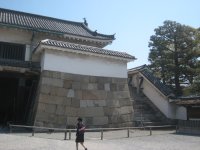 |
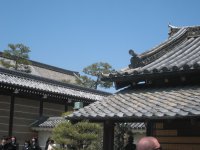 |
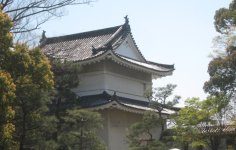 |
< Back to the index

